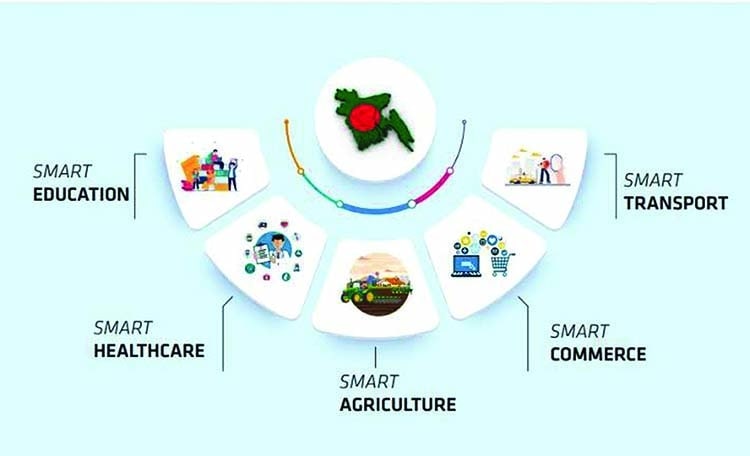Economic systems are the backbone of any country’s development, and it plays a vital role in shaping the future of any nation. Over the centuries, various economic systems have evolved, and each system has its advantages and disadvantages. Two of the most widely debated economic systems are free-market and command economies. The free-market economy emphasizes the role of market forces in determining the allocation of resources, while a command economy is based on government control over the economy’s major decision-making. In this article, we will explore the advantages and disadvantages of free-market and command economies.
Table of contents
Definition of Free-Market and Command Economy
A free-market economy is an economic system in which the market forces of demand and supply dictate the allocation of resources, production, and pricing of goods and services. This means that the government’s role is limited, and there is no intervention or control over the economy’s functioning. In a free-market economy, businesses, producers, and consumers have the freedom to make their own economic decisions, leading to competition and innovation.
On the other hand, a command economy is an economic system in which the government controls all economic activities and decides how resources are allocated, prices are set, and production is regulated. In a command economy, the government decides what goods and services are produced, how much is produced, and who gets access to them. The government has complete control over the economy, and there is no room for private enterprise or competition.
Advantages of a Free-Market Economy
Economic Efficiency: One of the significant advantages of a free-market economy is economic efficiency. Market forces of supply and demand ensure that resources are allocated efficiently, which leads to maximum economic output. Businesses and producers are incentivized to produce goods and services that consumers demand, leading to optimal utilization of resources.
Consumer Sovereignty: In a free-market economy, consumers have the power to decide what goods and services they want to buy. This consumer sovereignty ensures that businesses and producers produce goods and services that cater to the needs and wants of consumers. Consumers have a wide range of choices, and businesses have to compete to attract customers, leading to innovation and better quality products.
Innovation: The free-market economy promotes innovation as businesses and producers have the freedom to develop new products, services, and technologies. Innovation is a crucial driver of economic growth and prosperity, and the free-market economy incentivizes businesses and entrepreneurs to develop new ideas that can improve the quality of life.
Employment Opportunities: A free-market economy creates employment opportunities as businesses and producers compete for labor. This competition leads to wage increases, which is a benefit to the labor force. Furthermore, the free-market economy also allows for individuals to start their own businesses and become self-employed, further increasing employment opportunities.
Disadvantages of a Free-Market Economy
- Income Inequality: A free-market economy can lead to income inequality, as some individuals and businesses may become more successful than others. The winners in a free-market economy tend to accumulate more wealth and resources, leading to a widening gap between the rich and the poor.
- Externalities: The free-market economy can lead to negative externalities such as pollution and environmental degradation. Businesses and producers are incentivized to maximize their profits, which can lead to the exploitation of natural resources and the environment.
- Monopolies: A free-market economy can lead to the formation of monopolies, where a single company dominates the market and has significant market power. This can lead to a lack of competition, higher prices for consumers, and decreased innovation.
- Lack of Public Goods: Public goods, such as infrastructure and education, may not be provided sufficiently in a free-market economy. These goods may not be profitable for businesses to provide, and the government may not have the resources to invest in them.
Advantages of a Command Economy
- Economic Stability: In a command economy, the government has complete control over the economy, and it can plan and allocate resources to achieve economic stability. The government can ensure that essential goods and services are provided to all citizens, and there is no fluctuation in prices.
- Equal Distribution of Wealth: A command economy can promote a more equal distribution of wealth as the government can control the allocation of resources and ensure that everyone has access to basic goods and services.
- Public Goods Provision: A command economy can ensure that public goods, such as infrastructure, education, and healthcare, are provided to all citizens, regardless of their ability to pay.
- Reduced Income Inequality: A command economy can reduce income inequality by providing equal opportunities for all citizens, regardless of their socioeconomic status.
Disadvantages of a Command Economy
- Lack of Incentives: In a command economy, there may be a lack of incentives for individuals and businesses to innovate and produce more efficiently. The government controls all economic activities, and there is no competition to drive innovation and efficiency.
- Bureaucracy: A command economy requires a significant amount of bureaucracy to function, which can lead to inefficiencies, corruption, and a lack of responsiveness to citizens’ needs.
- Lack of Consumer Choice: In a command economy, the government decides what goods and services are produced and distributed, leaving citizens with limited choices.
- Lack of Flexibility: A command economy can be inflexible and slow to respond to changing economic conditions. The government’s control over the economy may prevent quick adjustments to market conditions, leading to economic stagnation.
Comparison of Free-Market and Command Economy
Both free-market and command economies have their advantages and disadvantages. In a free-market economy, the market forces of supply and demand determine the allocation of resources and the pricing of goods and services. This promotes competition, innovation, and economic efficiency, but it can also lead to income inequality, negative externalities, and the formation of monopolies.
In a command economy, the government controls all economic activities, and the allocation of resources and pricing of goods and services are decided by the government. This can lead to economic stability, equal distribution of wealth, and the provision of public goods, but it can also lead to a lack of incentives, bureaucracy, and limited consumer choice.
Conclusion
In conclusion, both free-market and command economies have their advantages and disadvantages. The choice of economic system depends on the country’s specific needs, priorities, and values. A free-market economy promotes competition, innovation, and economic efficiency, but it can also lead to income inequality, negative externalities, and the formation of monopolies. A command economy can promote economic stability, equal distribution of wealth, and the provision of public goods, but it can also lead to a lack of incentives, bureaucracy, and limited consumer choice.
Bibliography
- Mankiw, N. G. (2014). Principles of macroeconomics. Cengage Learning.
- Samuelson, P. A., & Nordhaus, W. D. (2010). Economics. McGraw-Hill Education.
- Stiglitz, J. E., & Walsh, C. E. (2006). Principles of macroeconomics. WW Norton & Company.
- Hirschey, M. (2009). Managerial economics. Cengage Learning.
- Bade, R., & Parkin, M. (2016). Foundations of economics. Pearson Education Limited.
- Smith, A. (1776). An inquiry into the nature and causes of the wealth of nations. W. Strahan and T. Cadell.
- Marx, K. (1867). Das Kapital. Verlag von Otto Meisner.
- Hayek, F. A. (1945). The use of knowledge in society. American Economic Review, 35(4), 519-530.
- Keynes, J. M. (1936). The general theory of employment, interest and money. Palgrave Macmillan.
- Galbraith, J. K. (1952). American capitalism: The concept of countervailing power. Houghton Mifflin.
- World Bank. (2019). World Development Indicators. Retrieved from https://databank.worldbank.org/source/world-development-indicators
- International Monetary Fund. (2019). World Economic Outlook Database. Retrieved from https://www.imf.org/en/Publications/WEO/weo-database/2020/October
- United Nations. (2019). World Economic Situation and Prospects. Retrieved from https://www.un.org/development/desa/dpad/publication/world-economic-situation-and-prospects-2019/
- OECD. (2019). OECD Economic Outlook. Retrieved from https://www.oecd-ilibrary.org/economics/oecd-economic-outlook-volume-2019-issue-1_0d1d1e2e-en
- Asian Development Bank. (2019). Asian Development Outlook. Retrieved from https://www.adb.org/publications/asian-development-outlook-2019-strengthening-resilience-growing-together
- European Commission. (2019). European Economic Forecast. Retrieved from https://ec.europa.eu/info/business-economy-euro/economic-performance-and-forecasts/economic-forecasts/winter-2019-economic-forecast_en
- Central Intelligence Agency. (2019). The World Factbook. Retrieved from https://www.cia.gov/library/publications/the-world-factbook/index.html
- United Nations Conference on Trade and Development. (2019). Trade and Development Report. Retrieved from https://unctad.org/en/PublicationsLibrary/tdr2019_en.pdf
- International Labour Organization. (2019). World Employment and Social Outlook. Retrieved from https://www.ilo.org/global/research/global-reports/weso/2019/lang–en/index.htm
- World Trade Organization. (2019). World Trade Statistical Review. Retrieved from https://www.wto.org/english/res_e/statis_e/wts2019_e/wts2019_e.pdf



 For all latest articles, follow on Google News
For all latest articles, follow on Google News